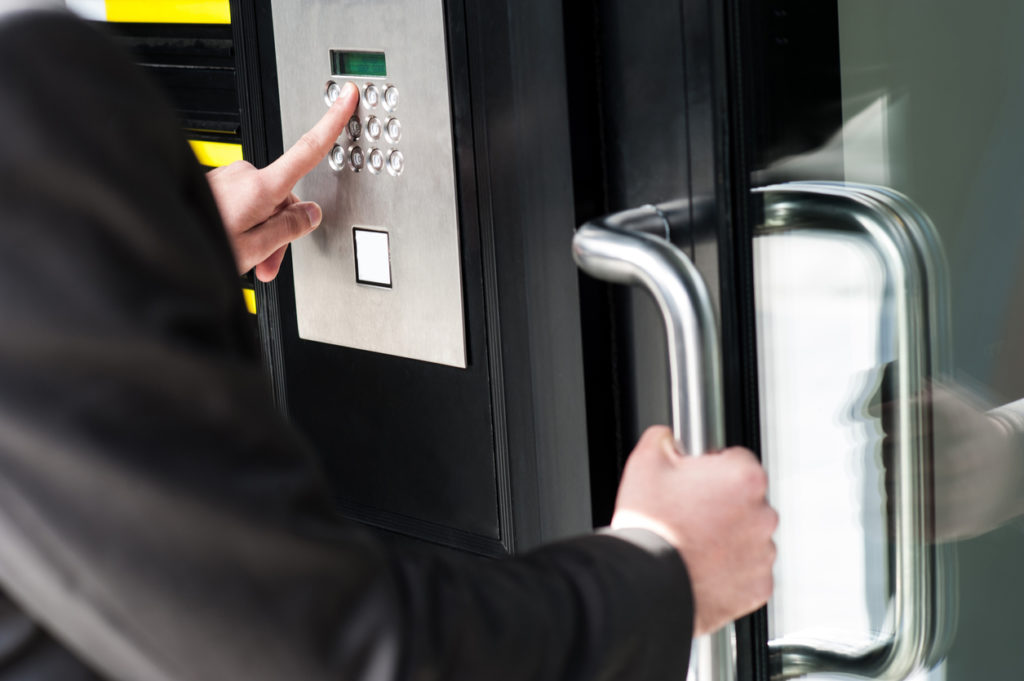
Today’s access control systems (ACS) are used for much more than granting or denying access based on cardholder rights. The proliferation of Internet of Things (IoT) and Internet Protocol (IP) based devices and their seamless connection to the internet has increased physical security capabilities and their role in large-scale security system deployments.
On the other hand, legacy access control systems leave a lot to be desired. If you haven’t upgraded your access control system in a while, here are five risks of legacy access control systems you should know about:
1. The Technology is More Vulnerable to Physical Hacks
Most older models of access control systems rely on Wiegand as the primary form of communication from access control panels to the readers. While there is nothing inherently wrong with Wiegand, you should know that it is less secure than its successor, OSDP. OSDP – or Open Supervised Device Protocol – is now widely accepted as the superior form of communications for access control.
Wiegand-based systems can be easily hacked by someone with limited experience, cheap tools, and access to the wiring. OSDP uses bidirectional communications to ensure continuous device status monitoring. Meaning that if anyone tries to hack into the ACS, OSDP stops this from happening and will even alert you to a potential service interruption. OSDP credentials also offer superior encryption that cannot be easily deciphered, even further protecting your facilities from hacks.
2. Hackers Can Easily Gain Access to Other Systems
Hackers will always go for the weakest point in a security system in order to gain access. For legacy access control users, that usually means your ACS. If you’ve taken advantage of other interconnected security devices but have yet to make the move on upgrading your ACS, your legacy system will be identified as the easiest way for hackers to access other networked devices.
Once that happens, you risk not only losing control of the ACS, but also your video surveillance system, video management system, and visitor management system. Depending on the level of automation used on site, this could also mean your thermostats, elevators, and even lights. As you can imagine, this kind of control can be a security and operational nightmare, leaving your physical assets at significant risk. The fact is, legacy access control systems are simply not built with the same cybersecurity knowledge and technology that is available today, meaning they are more suscep to modern attacks.
3. Privacy Violations
Speaking of hacks, once your network has been breached, not only are your connected devices at risk, but the hackers also now have complete access to the data tied to these devices. Often, this data is more valuable to hackers than any physical asset and is much easier to acquire. With the demand for personal information on the dark web continuing to rise, private information from employees or financial records would be the main target.
Leaving personal data vulnerable to attacks also opens the window for potential lawsuits and regulatory audits. Such a disruption costs an organization in terms of both dollars and reputation. An ACS that has yet to be updated with the latest cybersecurity protections will likely be the entry-point for hackers looking to financially profit from sensitive information.
4. Inability to Scale
In addition to lacking modern cybersecurity protections, legacy access control systems may also lack the ability to make use of other technologies that contribute to security. For example, legacy systems often lack dual- or multi-factor authentication capabilities. They may also not easily allow for the use of biometric credentials. Both multi-factor authentication and biometrics have been proven to better secure facilities by preventing and identifying bad access habits such as card sharing or piggybacking. An ACS incapable of utilizing today’s best security practices poses a significant security risk.
Legacy systems also create a dependency on other legacy hardware, software, and databases. Failing to continually update your ACS may leave you in a cycle of using other outdated technologies that are compatible with your legacy system. These other antiquated systems only broaden a hacker’s potential attack surface, opening up your facility to more frequent, less sophisticated attacks.
5. Lack of Modern Capabilities
By using a legacy ACS, not only do you open your organization up to increased risk, but you also close your organization off to the potential benefits of modern access control systems. This lack of modern capabilities is a risk in and of itself. Today’s modern access control can do more than just grant or deny access. Many come with integrated visitor management capabilities that eliminate the financial and administrative need for an additional system and lessening your potential attack surface.
The data that is gathered and easily accessible by administrators from an ACS can also be used as a cost generator. Administrators can use information such as access times, through counts, and failed access attempts to make smarter business decisions. This data can be even further enhanced through advanced integrations with AI and smart learning devices, something legacy access systems just can’t do. Leaving money and business intelligence on the table is a risk to any organization’s ability to scale.
Conclusion
Continuing to use legacy access control systems is a risk no company can afford in terms of dollars, personal safety, reputation, or otherwise. The good news is upgrading your ACS is not as complicated as you may think. In fact, much of the existing infrastructure of your legacy system, such as wiring or readers, can still be used without any significant risk to physical or cybersecurity hacks.
There are also a variety of new access control systems on the market that meet a variety of needs. More importantly, they are scalable, modern, and built to withstand today’s modern cyberattacks. Your security integrator can help discuss your options and install a contemporary access system that meets today’s needs.
At 3Sixty Integrated, we are here to advance enterprise organizations across multiple verticals to develop and implement sustainable security solutions. With over 19 years of experience, our team designs, installs, and maintains custom security solutions to keep your organization and assets safe and secure. Ready to get started? Contact us today to schedule a 30-meeting consultation or call us at (877) 374-9894.

